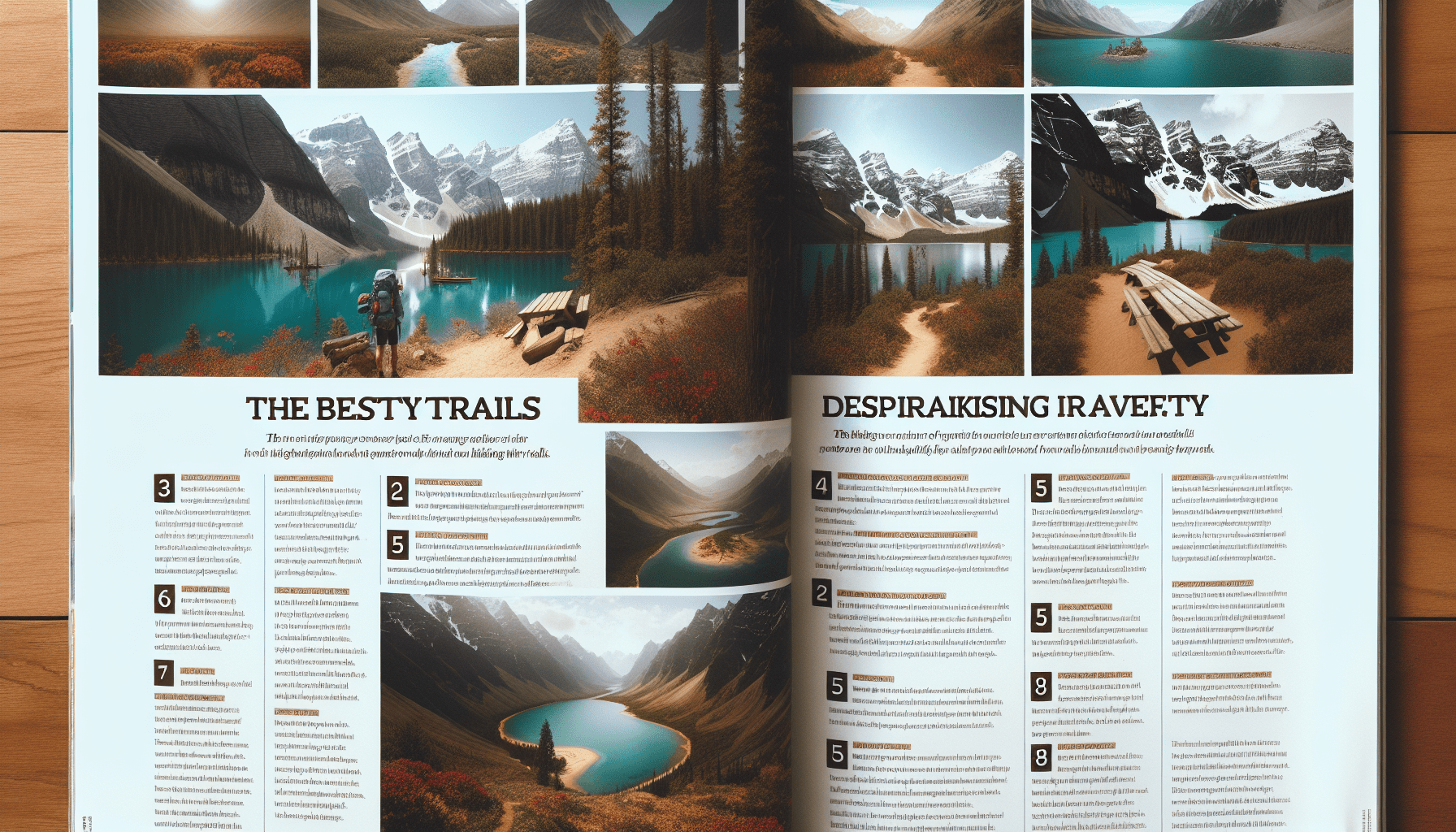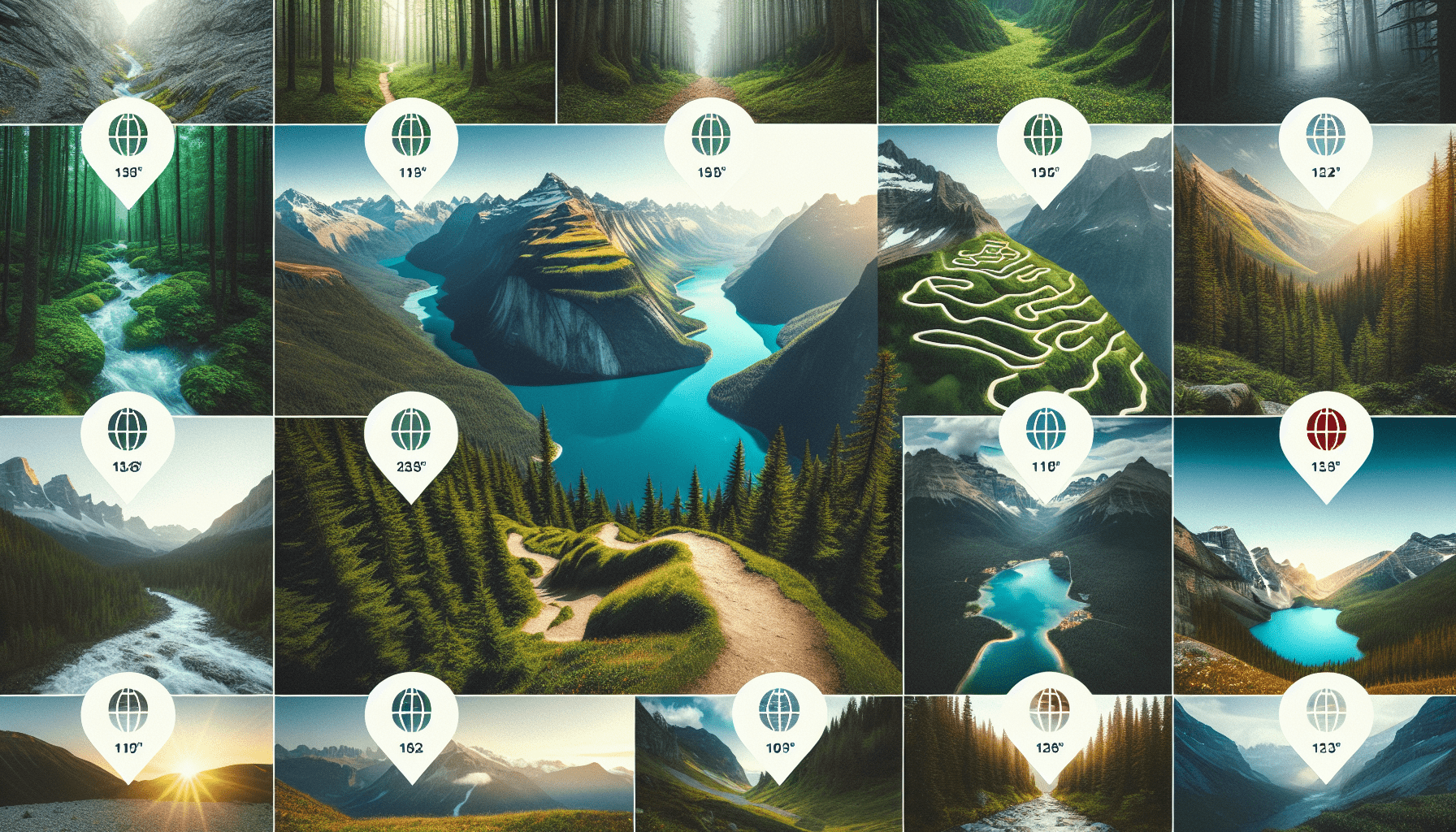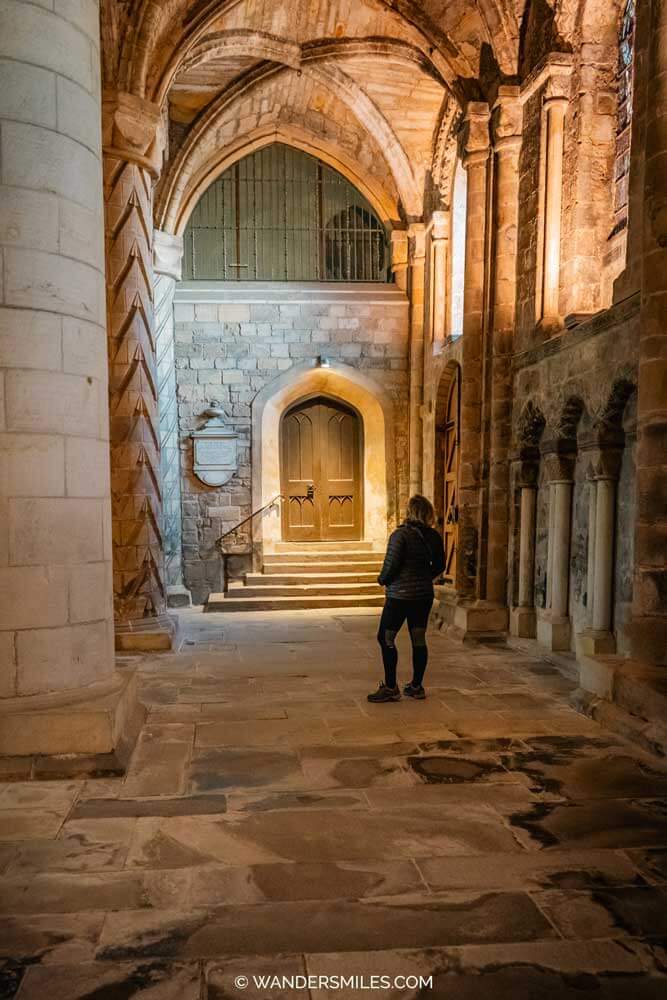Ready to embark on an incredible adventure? Get your hiking boots on, pack your essentials, and prepare to conquer the top 10 epic hiking trails. From rugged terrains to breathtaking vistas, these trails offer the perfect blend of challenge and beauty. Whether you’re an experienced hiker or just starting out, these trails will surely reward you with memories that last a lifetime. So lace up your boots and let’s explore the wonders of these magnificent hiking trails together.
Top 10 Epic Hiking Trails to Conquer
Are you ready for an adventure of a lifetime? Lace up your hiking boots and get ready to explore some of the most breathtaking trails around the world. From the rugged beauty of the Appalachian Trail to the ancient ruins along the Inca Trail to Machu Picchu, these epic hikes will challenge you physically and mentally while rewarding you with stunning landscapes and unforgettable experiences. So grab your backpack and let’s dive into the top 10 hiking trails to conquer.
Travel in Comfort with these Travel Essentials
1. Appalachian Trail
Overview of the Trail
Stretching over 2,100 miles from Georgia to Maine, the Appalachian Trail is a legendary hiking route that offers hikers an incredible journey through the eastern United States. This long-distance trail takes you through diverse landscapes, including dense forests, rolling mountains, and picturesque valleys. With its rich history and natural beauty, the Appalachian Trail is a must-visit for any hiker looking for an epic adventure.
Highlights and Features
Along the Appalachian Trail, you’ll encounter numerous highlights and features that make this hike truly special. From the stunning vistas of the Great Smoky Mountains National Park to the wild ponies of Grayson Highlands State Park, each section of the trail has its own unique charm. Make sure to stop by the famous McAfee Knob, known as the most photographed spot on the entire trail, and take in the panoramic views.
Tips and Recommendations
Before embarking on the Appalachian Trail, it’s important to be well-prepared. Make sure to plan your route and check the weather conditions beforehand. Carry plenty of water and pack lightweight, high-quality gear. It’s also crucial to familiarize yourself with Leave No Trace principles to minimize your impact on the environment. Lastly, don’t forget to bring a good map and a compass to navigate the sometimes challenging trail.
Challenges and Difficulties
The Appalachian Trail presents a variety of challenges and difficulties for hikers. The trail is physically demanding, with steep ascents and descents, rocky terrain, and unpredictable weather. Hikers should be prepared for long stretches without amenities and the need to carry sufficient supplies. Additionally, pesky insects, such as mosquitoes and ticks, can pose a challenge, so be sure to pack insect repellent and protective clothing.
Important Considerations for Hikers
As you embark on your journey along the Appalachian Trail, it’s important to respect the trail and fellow hikers. The trail is maintained by volunteers, so make sure to leave it as you found it. Respect the rules and regulations of the areas you pass through, including overnight camping restrictions. Additionally, be mindful of wildlife encounters and follow proper safety practices, such as storing your food securely to avoid attracting bears.
2. Pacific Crest Trail
Introduction to the Trail
The Pacific Crest Trail, spanning over 2,650 miles from the border of Mexico to Canada, is a hiker’s paradise. This iconic trail takes you through three states, including California, Oregon, and Washington, and showcases the diverse landscapes of the western United States. From deserts to mountains, the Pacific Crest Trail offers an unforgettable experience for those seeking adventure.
Notable Attractions and Scenery
Along the Pacific Crest Trail, hikers will encounter a myriad of notable attractions and breathtaking scenery. Journey through the desolate beauty of the Mojave Desert, marvel at the majestic peaks of the Sierra Nevada, and traverse the lush forests of the Cascades. Don’t miss the iconic Crater Lake, a stunning caldera lake located in Oregon, and the rugged beauty of the North Cascades National Park in Washington.
Essential Gear and Preparation
Proper gear and preparation are key when tackling the Pacific Crest Trail. Invest in high-quality hiking gear, including a sturdy backpack, a lightweight tent, and reliable footwear. Make sure to pack enough food and water, as well as a water filtration system, since water sources can be scarce in certain sections. Familiarize yourself with wilderness first aid and take safety precautions to ensure a successful hike.
Duration and Average Completion Time
Hiking the entire Pacific Crest Trail requires significant time and commitment. Most hikers take around five to six months to complete the entire trail, but shorter sections or thru-hikes can also be done. Take into account the seasonal weather conditions when planning your hike, as snow in the high Sierra or extreme heat in the desert can impact your progress. Be prepared for a physically and mentally demanding adventure.
Safety Precautions and Warnings
While the Pacific Crest Trail offers stunning landscapes and incredible experiences, it’s important to be aware of potential safety hazards. The trail can be physically challenging, with steep ascents, high elevations, and extreme weather conditions. It’s vital to stay hydrated, protect yourself from the sun, and have a plan in case of emergencies. Familiarize yourself with trail conditions and heed any warnings or advisories from local authorities.

Travel in Style with these Travel Essentials
3. Inca Trail to Machu Picchu
Historical Significance of the Trail
The Inca Trail to Machu Picchu is not only a stunning hiking route but also a journey into history. This ancient trail follows the footsteps of the Inca civilization, leading hikers through breathtaking Andean landscapes and a collection of fascinating archaeological sites. The trail’s historical significance, coupled with its natural beauty, makes it one of the most popular hikes in South America.
Permits and Regulations
To protect the integrity of the trail and ensure a sustainable experience, hiking the Inca Trail requires a permit. These permits have limited availability and should be secured well in advance, especially during the peak season from May to September. It’s essential to book your trip with a licensed tour operator who will handle the permit application process and provide knowledgeable guides.
Cultural Experiences Along the Route
As you journey along the Inca Trail, you’ll have the opportunity to immerse yourself in the rich culture of the Andean region. Encounter local communities and learn about their traditions, visit ancient Inca ruins, and witness stunning examples of Inca engineering, such as the impressive terraces of agricultural sites along the trail. This hike offers a fantastic blend of history, nature, and cultural immersion.
Must-See Landmarks and Ruins
The Inca Trail is brimming with must-see landmarks and ruins that showcase the ingenuity and mastery of the Inca civilization. Highlights include the archaeological sites of Patallacta, Runkuracay, Sayacmarca, and Wiñay Wayna. Of course, the jewel in the crown is Machu Picchu itself. Arriving at the Sun Gate and catching your first glimpse of the ancient citadel is an unforgettable moment and a well-deserved reward for completing the trek.
Altitude Sickness and Acclimatization
The Inca Trail reaches high altitudes, with the highest point at around 13,800 feet (4,200 meters) above sea level. Altitude sickness is a potential concern for hikers, so it’s crucial to acclimatize properly and take necessary precautions. Give yourself sufficient time to adjust to the altitude before starting the hike and consider taking medication to prevent altitude sickness. Stay hydrated, listen to your body, and notify your guide if you experience any symptoms of altitude sickness.
4. GR20, Corsica
Overview of the GR20
The GR20 in Corsica, France, is often referred to as one of the toughest long-distance hikes in Europe. This demanding trail covers approximately 112 miles (180 kilometers) across rugged mountainous terrain, offering hikers a thrilling adventure through pristine wilderness and breathtaking vistas. Prepare yourself for a challenge that will test your physical endurance and reward you with unparalleled natural beauty.
Scenic Beauty and Natural Landscapes
The GR20 showcases the remarkable diversity of Corsica’s natural landscapes. Traverse breathtaking granite peaks, lush forests, and rugged cliffs as you make your way through the trail. Don’t miss out on the stunning views from Monte Cinto, the highest peak on Corsica, or the enchanting Lac de Nino, a pristine mountain lake surrounded by lush meadows. This trail is a photographer’s dream come true.
Fitness and Endurance Requirements
The GR20 is not for the faint of heart. This demanding trail requires a high level of fitness and endurance due to its steep ascents and descents, exposed sections, and rocky terrain. It’s advisable to engage in regular physical training before attempting the hike, focusing on strength, endurance, and cardiovascular exercises. Proper preparation and conditioning will greatly enhance your experience and enjoyment of the trail.
Hut Accommodations and Camping Options
The GR20 offers a range of accommodation options for hikers, from mountain huts to designated camping areas. The mountain huts, known as refuges, provide shelter, meals, and basic amenities, allowing hikers to travel relatively lightweight. However, it’s advisable to book the refuges in advance, as they can fill up quickly during the peak season. If you prefer camping, there are designated areas along the trail where you can set up your tent.
Weather Conditions and Best Time to Hike
Corsica’s weather can be unpredictable, so it’s essential to plan your hike accordingly. The best time to tackle the GR20 is during the summer months, from June to September, when the weather is generally more stable. Keep in mind that the trail can get crowded during this period, so it’s advisable to book accommodation and transportation in advance. Be prepared for occasional rain showers and sudden changes in weather conditions.

5. Torres del Paine Circuit
Introduction to Torres del Paine
Nestled in the stunning landscapes of Patagonia, the Torres del Paine Circuit offers hikers a thrilling adventure through one of the most beautiful regions in the world. This iconic trail takes you through the Torres del Paine National Park in Chile, allowing you to immerse yourself in expansive wilderness, towering peaks, and pristine lakes. Prepare to be awe-struck by the sheer beauty of Patagonia.
Expansive Wilderness and Wildlife
The Torres del Paine Circuit showcases the vast expanse of Patagonia’s wilderness, where untamed landscapes stretch as far as the eye can see. Hikers will encounter majestic glaciers, dense forests, and crystal-clear lakes along the trail. Keep an eye out for the park’s diverse wildlife, including guanacos, Andean condors, and elusive pumas. This hike offers a truly immersive experience in nature’s untouched beauty.
Navigation and Marking of the Trail
While the Torres del Paine Circuit is well-marked, it’s essential to have proper navigation skills and equipment. Familiarize yourself with the trail map and carry a compass or GPS device to ensure you stay on course. Pay attention to the trail markers, which consist of yellow rectangles painted on rocks or poles. In some sections, the trail can be challenging due to steep ascents, river crossings, and potentially strong winds.
Camping Facilities and Equipment
Camping is an integral part of the Torres del Paine Circuit experience. The park offers designated campsites with basic amenities, including toilets and cooking areas. It’s essential to book your campsites in advance, especially during the peak season from December to February. When it comes to equipment, ensure you have a sturdy tent, a warm sleeping bag, and a reliable camping stove to prepare meals.
Suggested Itineraries and Side Excursions
The Torres del Paine Circuit can be completed in various ways, depending on your timeframe and preferences. The full circuit typically takes around 8 to 10 days to complete, but shorter routes are also available. Don’t miss out on side excursions, such as the iconic trek to the base of the famous Torres del Paine towers or a boat ride to the stunning Grey Glacier. Plan your itinerary carefully to make the most of your time in this extraordinary national park.
6. Zion Narrows, Utah
Overview of the Zion Narrows
Immerse yourself in a unique hiking experience as you traverse the stunning Zion Narrows in southern Utah. This iconic slot canyon hike takes you through the narrow gorge carved by the Virgin River, surrounded by towering walls of red sandstone. Prepare to wade through the river and be awestruck by the otherworldly beauty of this natural wonder.
Unique Slot Canyon Experience
The Zion Narrows offers a truly unique hiking experience, unlike anything you’ve encountered before. As you make your way through the canyon, the walls narrow, sometimes to just a few feet apart, creating a stunning visual spectacle. Be prepared to wade through ankle-deep water and navigate slippery rocks, as the trail is often submerged in the river. This hike combines adventure, beauty, and a welcome respite from the desert heat.
Permits and Regulations
Given the delicate nature of the Zion Narrows, permits are required to hike in the narrowest sections of the canyon. These permits can be obtained online or at the visitor center. It’s essential to check the weather and river conditions before embarking on the hike, as flash floods can occur. Be sure to follow the park’s regulations, pay attention to any warnings or advisories, and respect the fragile ecosystem of the canyon.
Water Levels and Flash Flood Risks
The Zion Narrows is subject to flash floods, which can occur even if it’s not raining directly in the area. It’s crucial to check the forecast and water levels before starting your hike and be prepared to turn back if conditions worsen. Always be aware of your surroundings and have an exit strategy in case of an emergency. It’s recommended to carry a waterproof bag for your belongings and wear appropriate footwear with good traction.
Gear and Footwear Recommendations
When hiking the Zion Narrows, proper gear and footwear are essential. Wear sturdy and supportive footwear that can handle the uneven terrain and provide good traction when walking on wet rocks. Neoprene socks can also be a useful addition to protect your feet from cold water and prevent blisters. Make sure to carry a walking stick or trekking poles for stability and always pack a headlamp, as sections of the canyon can be quite dark.
7. Haute Route, Switzerland
Introduction to the Haute Route
The Haute Route, a classic trek in the Swiss Alps, offers hikers a chance to experience some of the most spectacular alpine vistas in Europe. This challenging and rewarding trail stretches over approximately 112 miles (180 kilometers) from Chamonix, France, to Zermatt, Switzerland. Get ready to be immersed in the breathtaking beauty of the Swiss Alps while traversing glaciers, high passes, and charming alpine villages.
Spectacular Alpine Vistas
As you hike along the Haute Route, you’ll be treated to an array of spectacular alpine vistas. Marvel at the towering peaks of Mont Blanc, the Matterhorn, and countless other majestic summits. Take in the beauty of pristine lakes, lush valleys, and colorful alpine flora. The ever-changing landscape will leave you in awe, making this trail a paradise for nature photographers and mountain enthusiasts.
Accommodation Options and Logistics
The Haute Route offers a variety of accommodation options, ranging from mountain huts to hotels in alpine villages. It’s advisable to book your accommodations in advance, especially during the peak season. Carry a lightweight sleeping bag for the mountain huts, where basic amenities are provided, including meals. When planning your hike, consider the logistics of transportation between starting and ending points, as well as baggage transfers if needed.
Glacier Travel and Safety Precautions
Glacier crossings are a highlight of the Haute Route but require proper knowledge and precautions. It’s highly recommended to have previous glacier travel experience or hire a certified mountain guide. Carry the necessary equipment, including crampons, ice axes, and ropes, and be proficient in self-arrest and crevasse rescue techniques. Pay attention to weather conditions, as glacier travel can be dangerous in poor visibility or during unstable snow conditions.
Fitness Level and Training Tips
The Haute Route is physically demanding and requires a good level of fitness and endurance. Prioritize cardiovascular exercises, such as hiking or running, to build stamina and lung capacity. Strength training, particularly for your core and lower body, will help you tackle steep ascents and descents. Incorporate hill training into your routine and gradually increase the difficulty of your hikes to simulate the conditions of the Haute Route.
8. Overland Track, Tasmania
Overview of the Overland Track
Trek through the breathtaking wilderness of Tasmania by embarking on the Overland Track. This six-day hike takes you through the heart of the island’s World Heritage-listed national park, showcasing the diversity of its ecosystems. From ancient rainforests to alpine plateaus and glacial lakes, the Overland Track promises a truly immersive experience in Tasmania’s natural beauty.
Diverse Ecosystems and Landscapes
The Overland Track traverses a range of diverse ecosystems and landscapes, exposing hikers to Tasmania’s unique flora and fauna. Marvel at the towering eucalyptus trees in the ancient rainforests of the Cradle Mountain-Lake St Clair National Park. Gradually ascend to the alpine plateau, where you’ll encounter pristine lakes, open moorlands, and breathtaking vistas. Keep an eye out for unique wildlife, including wombats, wallabies, and endemic bird species.
Camping Sites and Facilities
The Overland Track offers designated camping sites along the trail, equipped with basic amenities, including pit toilets and rain shelters. These sites must be booked in advance, as they have limited capacity to preserve the natural environment and minimize human impact. Carry a lightweight tent, a comfortable sleeping bag, and a camping stove to prepare meals. Remember to adhere to camping regulations and leave no trace of your presence.
Flora and Fauna Highlights
The Overland Track is a haven for nature enthusiasts, offering a chance to spot Tasmania’s unique flora and fauna. Look out for the iconic dolerite peaks of Cradle Mountain and Barn Bluff, nestled amidst vibrant alpine vegetation. Keep your eyes peeled for the vibrant blooms of wildflowers, including pink mountain berries and yellow King Billy pines. Wildlife encounters are also common, with opportunities to spot wombats, echidnas, and native birds.
Preventing Environmental Impact
As you journey along the Overland Track, it’s vital to minimize your environmental impact to preserve the delicate ecosystems. Follow the principles of Leave No Trace, including proper waste disposal, respect for wildlife, and sticking to established tracks. Stay on designated paths and boardwalks to prevent soil erosion and damage to fragile vegetation. By treading lightly, you can ensure the Overland Track remains a pristine wilderness for future generations.
9. Great Himalaya Trail
Introduction to the Great Himalaya Trail
For the ultimate adventure, consider embarking on the Great Himalaya Trail, spanning the entire length of the awe-inspiring Himalayas. This epic trek takes hikers through six countries, including India, Nepal, Bhutan, Tibet, Pakistan, and Myanmar, showcasing the stunning Himalayan mountain range. Prepare to challenge your limits, immerse yourself in diverse cultures, and witness breathtaking vistas at every turn.
High-Altitude Challenges and Risks
The Great Himalaya Trail presents unique challenges and risks due to its high-altitude nature. Hikers may face altitude sickness, a potentially dangerous condition caused by rapid ascent to high elevations. Proper acclimatization is crucial, giving your body time to adjust to the thin air. It’s advisable to consult with a medical professional, carry medication, and ascend gradually to minimize the risks. Always be aware of your body’s responses and be prepared to descend if necessary.
Cultural Immersion and Local Communities
One of the most enriching aspects of trekking the Great Himalaya Trail is the opportunity to immerse yourself in diverse cultures and engage with local communities. Each region along the trail has its own distinct traditions, customs, and cuisine. Interact with friendly locals, learn about their way of life, and participate in cultural exchanges. Respect local customs and traditions, and be mindful of the impact of tourism on these remote communities.
Navigation and Trekking Permits
Given the significant length and diverse terrain of the Great Himalaya Trail, navigation skills and permits are essential. Trekking maps, GPS devices, and the assistance of experienced guides are highly recommended. Be aware that permits may be required for certain sections of the trail, depending on the country and region. These permits help regulate the flow of visitors, protect sensitive environments, and contribute to local conservation efforts.
Accommodation Options and Costs
Accommodation along the Great Himalaya Trail can vary depending on the region and your preferred level of comfort. While some sections offer lodges and teahouses, other remote areas may require camping. Costs will vary according to accommodation choices and the services provided. It’s important to plan ahead and budget for meals, accommodation, permits, and transportation. Research reputable trekking agencies and consult with experienced trekkers to get an accurate estimate of costs.
10. West Coast Trail, Canada
Overview of the West Coast Trail
Located on Vancouver Island in British Columbia, the West Coast Trail is renowned for its stunning coastal scenery and rugged wilderness. This 47-mile (75-kilometer) trail takes you through ancient rainforests, sandy beaches, and breathtaking cliffs, offering a true wilderness experience. Prepare to be mesmerized by the beauty of Canada’s Pacific coastline and the wildlife that calls this area home.
Stunning Coastal Scenery and Wildlife
The West Coast Trail boasts some of the most picturesque coastal scenery in Canada. Traverse towering cedar trees, moss-covered forest floors, and secluded beaches as you hike along the trail. The Pacific Ocean serves as a backdrop, showcasing dramatic seascapes and marine life. Keep an eye out for gray whales, sea lions, and bald eagles as you breathe in the crisp ocean air.
Trail Conditions and Difficulty Levels
The West Coast Trail presents a range of trail conditions and difficulty levels, making it suitable for both experienced hikers and those seeking a challenge. Sections of the trail can be muddy, slippery, and demanding, with ladders and cable cars to navigate. Hikers should be prepared for variable weather conditions, including heavy rain and strong winds, which can make certain sections more challenging. Ensure you have proper gear and footwear to tackle the trail safely.
Reservations and Fees
Due to its popularity, the West Coast Trail requires reservations and permits to manage the number of hikers on the trail. These permits can be obtained online or through designated reservation centers. It’s advisable to book well in advance, as spots fill up quickly, especially during the peak season from May to September. Fees apply for both the permit and camping along the trail, contributing to the maintenance and preservation of this unique wilderness area.
Safety Considerations and Emergency Protocols
While the West Coast Trail offers stunning beauty, it’s crucial to prioritize safety and be prepared for emergencies. Pack essential safety equipment, including a first aid kit, a waterproof map, and a communication device. Be aware of tide times, as some sections can only be traversed during low tide. Pay attention to warnings, advisories, and safety information provided by park officials. In case of an emergency, follow designated protocols and contact emergency services if needed.
Now that you’ve explored the top 10 epic hiking trails to conquer, it’s time to start planning your next adventure. Whether you choose the rugged beauty of the Appalachian Trail, the ancient ruins along the Inca Trail to Machu Picchu, or the stunning coastal scenery of the West Coast Trail, each of these trails promises a unique and unforgettable experience. So lace up your hiking boots, embrace the spirit of adventure, and get ready to conquer the world, one trail at a time.






